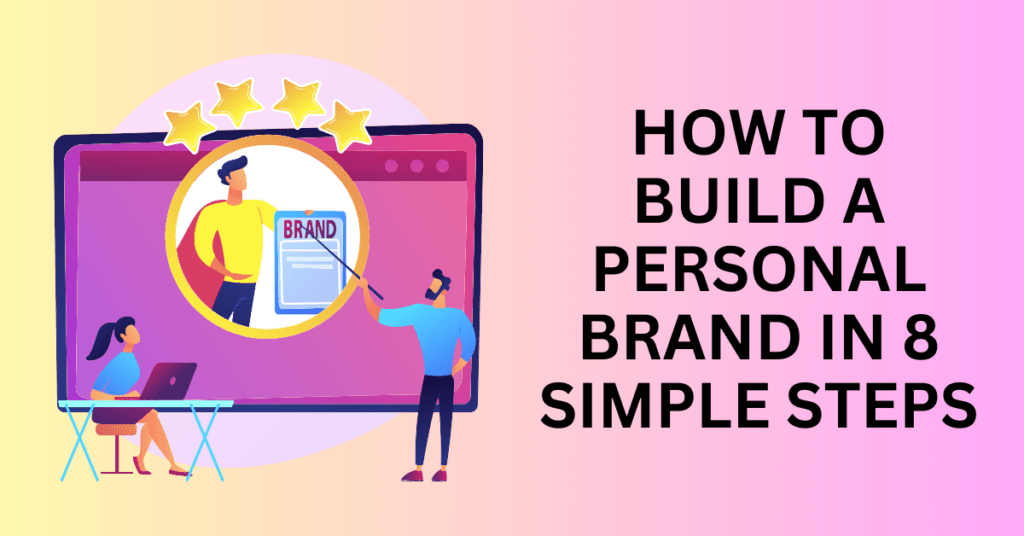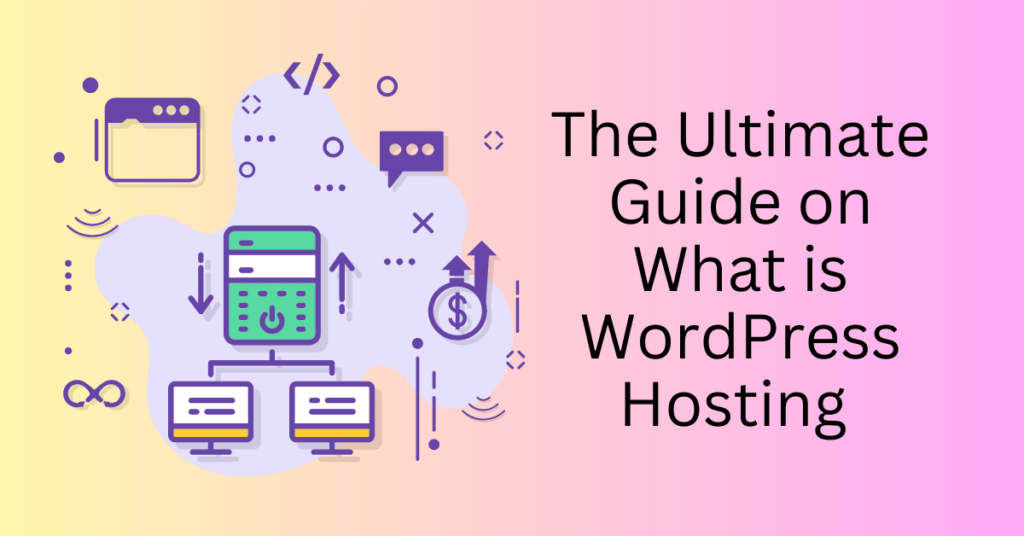If you would like to document your travel experience or even make some money as a travel blogger, you are at the right place. With limited cost, we will show you how to create a travel website with WordPress that your visitors will love.
Travelling is something favoured by a lot of people. However, due to the nature of the high cost of travelling, it is important to be able to monetize your travel so that you are able to cover the travel cost. And in some cases, to earn a living become a full-time travel blogger.
And today, we will be sharing how to create a travel website on WordPress from scratch, market it and monetize it.
Anyone can create a travel website, but it is highly effective for:
- Solo travellers looking for ways to live a dream life and monetize their journeys
- A travel agency looking to start a travel blog and do content marketing to draw the attention of prospects
- A lead generation agency eyeing more leads for its tourism-related clients
Why You Should Create a Travel Website
Starting a travel website can be a fulfilling and potentially profitable venture for those with a passion for travel and a desire to share their experiences with others. Whether you’re a seasoned traveller or just starting out on your journey, a travel website can be a great way to connect with other travellers, share your insights and experiences, and even earn money in the process.
Potential to Earn Money
There are many ways to monetize a travel website, including affiliate marketing, sponsored content, and advertising. As your website grows in popularity, you may also be able to partner with travel companies and brands to create sponsored content and earn commissions for bookings made through your website. For example, you can join affiliate programs such as Booking.com, Expedia, and Agoda, which allow you to earn a commission for every booking made through your website. Additionally, you can also monetize your website through sponsored posts, where you get paid by brands to feature their products or services on your website.
Build A Travel Community
By sharing your experiences and offering tips and advice, you can help others plan their own trips and connect with other travellers. This can be especially valuable for solo travellers or those who are new to a destination, as it can provide a sense of community and support. Additionally, by building a community of loyal readers, you can also increase your website’s reach and attract more advertisers and sponsors.
In addition to earning money and building a community, starting a travel website can also be a great way to share your experiences and inspire others to travel. Through your writing and photography, you can showcase the beauty and diversity of different destinations and cultures, and inspire others to explore the world for themselves. By sharing your personal stories and experiences, you can also provide valuable insights and tips that can help others plan their own trips.
However, starting a travel website requires hard work and dedication. It will take time to build an audience, create content, and monetize your website. It’s important to have a clear vision and strategy in place and to consistently create high-quality content that appeals to your target audience. Additionally, it’s important to stay up to date with the latest trends and technologies, such as using social media and SEO to promote your website and increase visibility.
Establish Your Niche
With so many travel blogs and websites out there, it can be challenging to stand out from the crowd. One way to do this is by focusing on a specific niche, such as budget travel, luxury travel, or adventure travel. This will help you to attract a specific audience and establish yourself as an authority in your niche. Additionally, by focusing on a specific niche, you can also create targeted content that appeals to your target audience and increase your chances of monetizing your website.
One of the most important things to consider when starting a travel website is to create quality content. The key to success is to consistently create high-quality content that appeals to your target audience. This can include blog posts, travel guides, reviews, and photographs. Additionally, it is important to optimize your website for search engines, to make it more visible to your target audience. This can include using keywords, meta descriptions, and alt tags, as well as creating high-quality backlinks.
Starting a travel website can be a great way to share your passion for travel, build a community, and inspire others to explore the world. It also has the potential to earn you money and provide you with a career in the travel industry. If you’re dedicated and willing to put in the work, it can be a rewarding experience.
What Should You Include in The Travel Website – How to Create a Travel Website
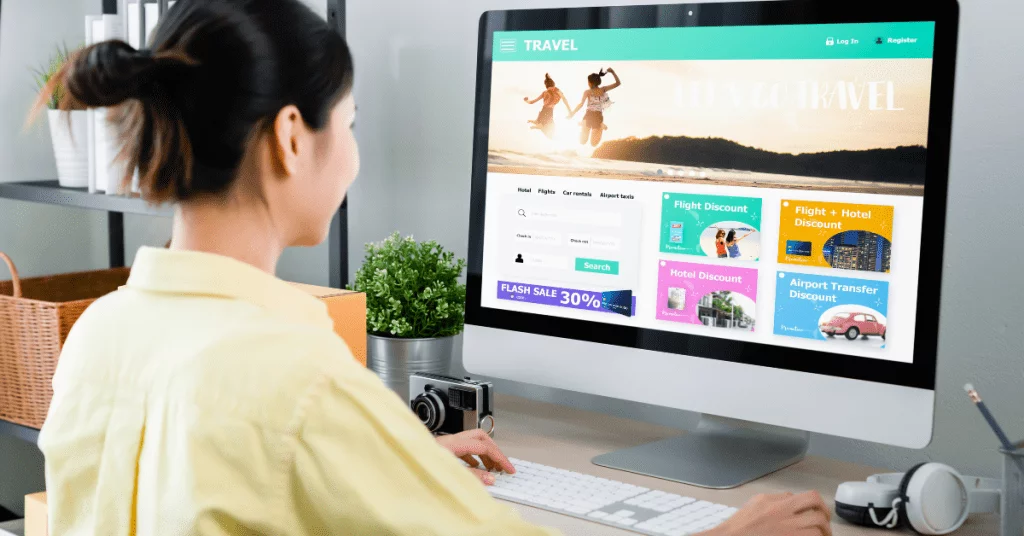
A travel website should include a variety of features to provide users with a comprehensive and user-friendly experience.
First and foremost, a travel website should provide detailed information on destinations and travel options. This information should include things like popular attractions, local customs, and recommended activities. It should also include information on transportation options, such as flights, trains, and buses, as well as reviews of different accommodation options, such as hotels, hostels, and vacation rentals.
Another important feature of a travel website is booking and purchasing travel arrangements directly on the site. This should include not only flights and accommodations, but also rental cars, tours, and other travel-related services. A travel website should also have a secure payment gateway to ensure the safety of users’ personal and financial information.
In addition to these core features, a travel website should also include a variety of tools and resources to help users plan and prepare for their trips. This could include things like weather forecasts, currency converters, and packing lists.
Finally, a travel website should also include a blog or news section where users can read about travel-related topics and get inspiration for their next trip. This section should also include updates and news about travel destinations, airlines, and other travel-related information.
Other Important Elements to Create a Travel Website – Responsive design
It is important to note that people might be visiting your site from anywhere in the world. They might not be having laptop access at all times. Hence, it is very important for your website to be able to view properly on different devices.
You should ensure that your website is able to scale and load perfectly on different screen types and make it easy for your audiences to visit.
Other Important Elements to Create a Travel Website – An image or video gallery
When talking about travel, nothing speaks better than an image or a video. You can describe the place perfectly with words, but don’t leave your audience with imagination. Instead, show them the amazing sights and your experience that you documented in with your phone or camera.
Then put it in your travel portfolio and show your audience. In some cases, you might be able to sell your photographs as stock images.
Other Important Elements to Create a Travel Website – Booking System
If you plan to grow your business into a travel business, you can always add on the booking system so your potential customers can directly make bookings and payments online at your site.
This could be done 24/7 as long as your website is working fine, you can take orders anytime, anywhere.
How to Create a Travel Website in 5 Steps
Now, let’s go to the main part of building the website from scratch. We will be showing you step-by-step how to build your first travel website from scratch. Making sure that even if this is your first time, or you have no technical knowledge previously, you will be able to follow as well.
And if you follow closely, you will have your stunning travel website ready in less than an hour. (Trust me, we did this many times before).
Step 1: Decide Your Website Name
This is one of the most important steps as you don’t want to always change your business name after people know about you. You can change the branding colour and logo, but don’t change your name.
People will take some time to remember you again.
Ideally, your business name, website name, and social media name all should be the same. You should only have one name across all platforms.
Be specific, make it personal and be creative to get something that is easy to memorize. You want people to remember it forever.
Once you got your name selected, head up to namechk to see whether your name is available across all different platforms.

Then, go to the registrar of your choice like Godaddy or Namecheap to register your domain name. You can choose either to use a .com domain or another TLD like .co.uk if you are targeting a single country only.
Alternatively, if you are using Bluehost, you can get a free domain for 1 year with the hosting plan.
Step 2: Get a Web Hosting Service
Next, since you are building the travel website on WordPress, you will need to get a hosting service. A place to store and host your website so your visitors can visit it from the internet.
There are many different web hosting service providers out there. And the top three recommended by WordPress are:
Different web hosting services might offer different packages of the server size and whether is it a shared or dedicated server.
Anyway, you just need shared hosting to start and scale it when your website grows. The more important are reliability and performance.
For this guide, we will be using Bluehost. Bluehost is one of the best web hosting services that we use and is easy for WordPress installation as there is a one-click deployment function for WordPress.
1. Choose a hosting plan
There are different web hosting plans offered by Bluehost, you can start with shared hosting, VPS hosting, dedicated hosting or even WordPress hosting.
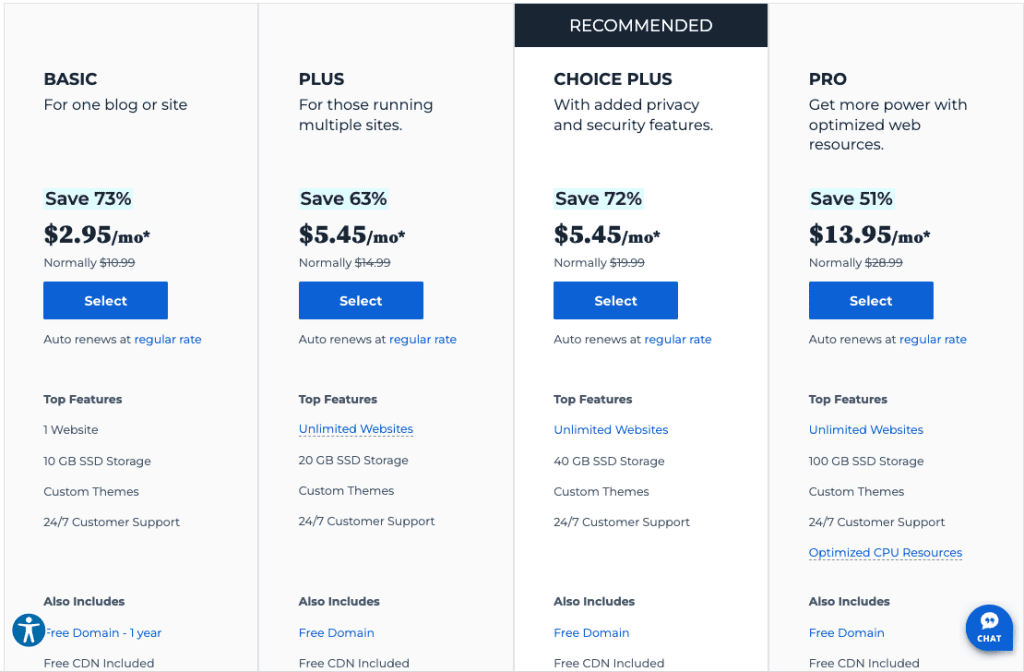
To help you choose the plan, you can read our WordPress plan review or simply start with a shared or WordPress hosting plan. It starts at just $2.95 per month.
2. Picking a new domain name
With all the Bluehost plans, you will get a free domain name for the first year.
Once you have selected your hosting plan, select Create a New Domain to choose your free domain name.
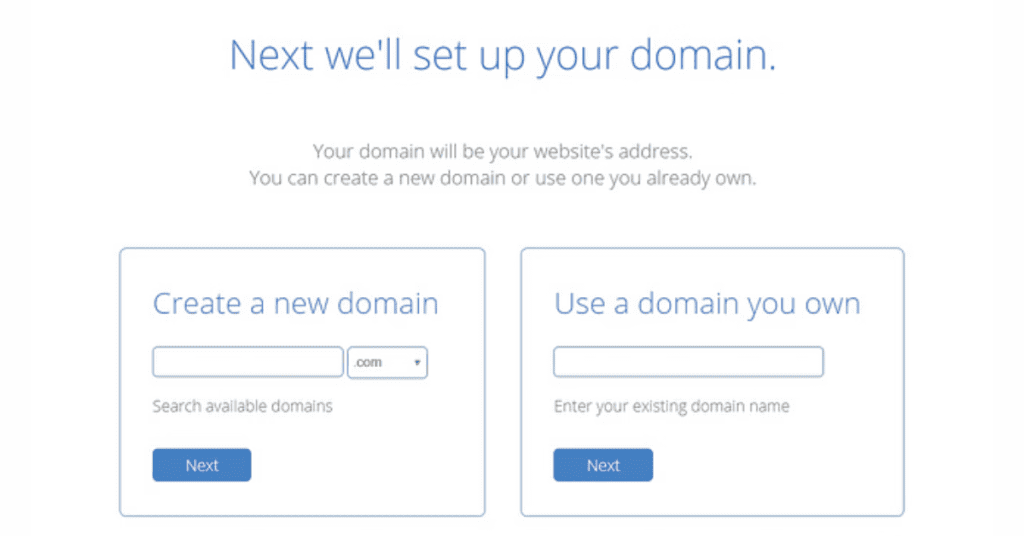
If you already have your domain name registered with the third-party domain registrar, you can use it here. Else you can type in your chosen domain name and see if it’s available.
To use your own domain name, you will need to configure the DNS to point your domain name to Bluehost’s nameservers.
3. Enter Bluehost account information
Next, Bluehost will ask you to fill out some personal information to create your account. Or, you can sign in with Google.
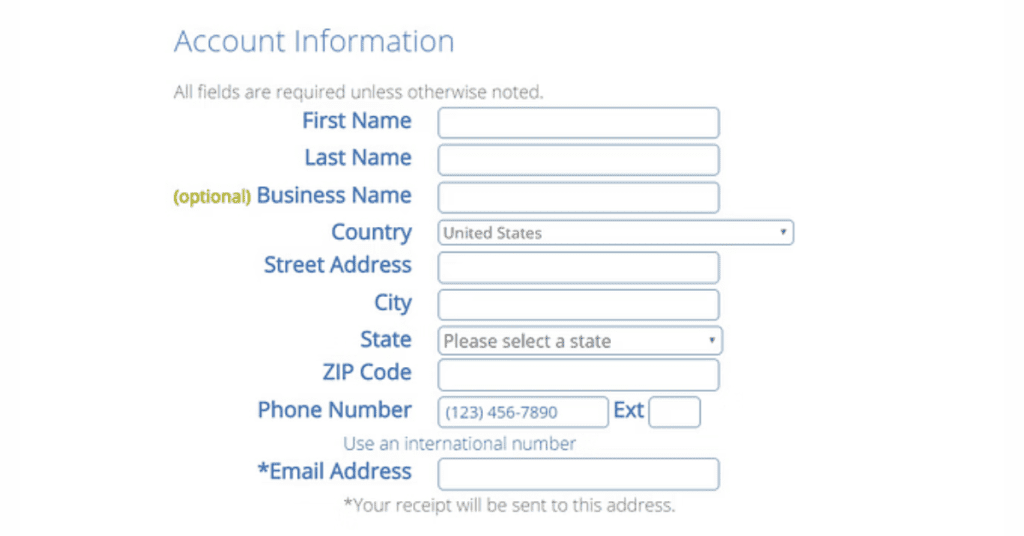
4. Confirm hosting plan details
Now, it’s time to make payment. Bluehost will list down all included in your list, with some add-ons. These add-ons are extra services that are charged separately. Hence, you need to be careful and select those required only.
For now, we would suggest unticking all. You can select the addons later when you need them.
Under Account Plan, you can also set the number of years you want to sign up Bluehost for. The minimum commitment is 12 months, but you can get a bigger discount if you commit up to three years in one shot.
5. Enter your payment details
The last step in the Bluehost sign-up process is to enter your payment details and complete the checkout.
Bluehost will now go ahead and set up your new hosting plan and domain name. You will then receive an email with payment confirmation as well as your new account information, including login and password details.
As a satisfaction guarantee, Bluehost provides a 30-day money-back guarantee. If you are unhappy with your plan or the hosting service within 30 days, you can always ask for a refund.
Step 3: Installing WordPress on Bluehost
Now you have the hosting and domain both ready, it’s time to install WordPress. As Bluehost has a simple one-click installation feature for WordPress, you can install it easily.
1. Log in to Bluehost
To start:
- Log in to your new Bluehost account.
- Go to the My Sites tab.
- Click the Create Site button in the top-right corner.
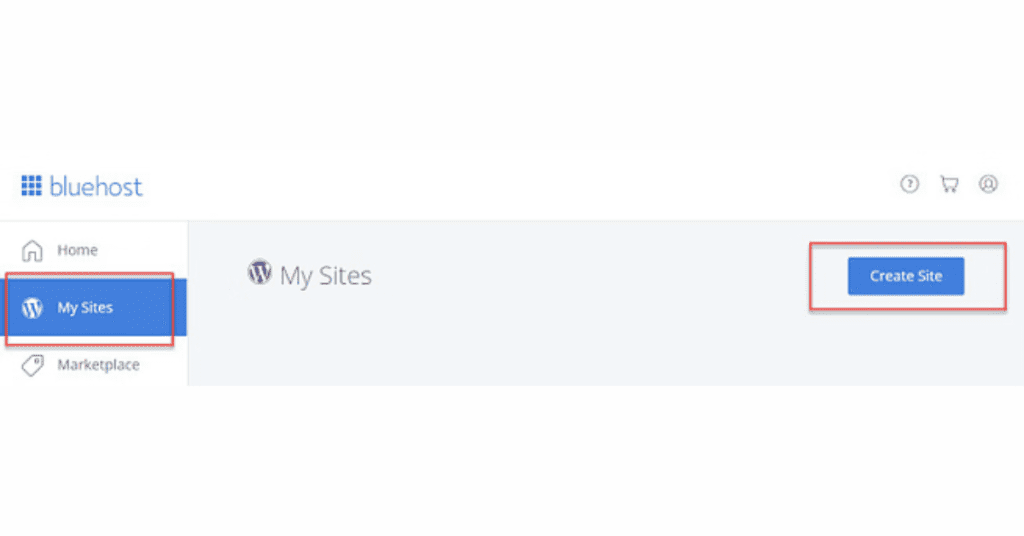
2. Enter your website info
Next, you need to enter some basic information about your website, including the Site Name and Site Tagline.
3. Choose your domain name
Use the Domain drop-down to select the domain name that you chose when you created your Bluehost account.
You can also choose whether or not to install some of Bluehost’s recommended plugins.
4. Click “Next” to install WordPress on Bluehost
Bluehost will now install WordPress for you, create your new WordPress website, and display your login details.
Step 4: Install a theme for your travel website
A WordPress theme is an overall design for your website. It is the basis for a WordPress site.
To start, we will pick a theme that is lightweight, and fully customizable. And most important, templates are available for building the travel site fast.
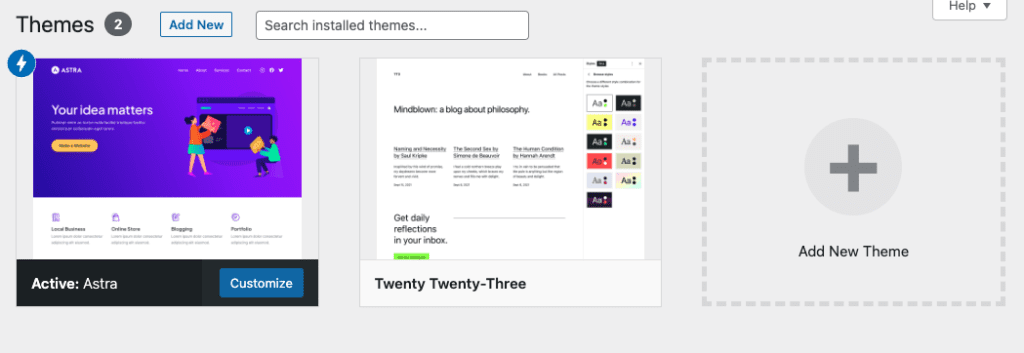
For this, we will be using the Astra theme for the travel website.
To install it, go to Appearance > Themes and press Add New button.
You can find Astra by using the search box. Press the Install button and activate it when the option appears.
Next, you will need to install the starter template plugin for Astra. The start template plugin will give you access to all Astra templates and let you import the website design together with all related plugins into your website instantly.
Step 5: Import a travel template
We need to install the Starter Templates plugin to access the library.
Go to Plugins > Add New and look for the Starter Templates plugin by typing the name in the search box.
Install and activate the plugin when it appears on your screen.
You can open the template library from Appearance > Starter Templates.
Once there, select the page builder of your choice from the list that includes Spectra, Elementor and Beaver Builder.
You will find a huge variety of travel website templates to support your adventures as a traveller, a travel agency business, a hotel and resort and several others.
Let’s import a template to Create a Travel Website
Why did we choose the Travel Blog template?
It’s ideal for solo travellers and influencers who want to visit places and earn through being an affiliate. We can recommend it to those who like to stay with the default Gutenberg editor.
But it’s entirely up to you what template you use.
Once you select a template, an import wizard will walk you through a short import process.
You can upload a logo and change fonts and colours on your way to the final step.
The process may take just over a minute to import everything this template needs to run, including layout design, sample data, essential pages, and plugins.
With the default settings, your website should look similar to the image. And now, your website is ready to be viewed online.
However, your work does not end here. Instead, it just started. You need to start customizing the website for your content.
Useful Plugins for Your Travel Websites – How to Create a Travel Website
Now you have your website live, but you will need also plugins to add related features to your website.
For example, you will want a contact form to record their contact information or to submit their request.
However, you will not need a lot of plugins as it will make your website heavy and end up loading very slowly.
Here, we are going to list down a few useful plugins for your travel website.
1. WP Portfolio

Photos and videos are two very important elements in creating an attractive travel website. You can build a huge audience by sharing nice photos and videos of places that you visited. This will increase their curiosity and want to visit the place.
And if they do, they will want to listen more about your experience, guides and tips for visiting the place.
Although WordPress itself provides a gallery management tool for uploading photos and videos to your website. We recommend using WP Portfolio plugin for this.
WP Portfolio is a powerful solution to present your images and videos in style and adds lots of interactive features and effects.
It’s a complete image management tool to help you add galleries anywhere on your website with the help of easy-to-understand and fully customizable shortcodes.
WP Portfolio is more than adding galleries to your website. You can select layouts for images or videos from hundreds of prebuilt and customizable templates that work with all popular page builders.
If you are a travel blogger and also plan to show off your photographic portfolio on your site, this plugin can help you create one.
2. WP Travel Engine

WP Travel Engine is an all-in-one tool for your travel business needs.
You can create itineraries, receive bookings, get customer reviews, convert currencies, and process payments through a variety of payment gateways.
You can embed trip widgets anywhere on the website, including blog posts. That’s an added advantage for travel influencers who want to generate affiliate income.
3. Yoast SEO
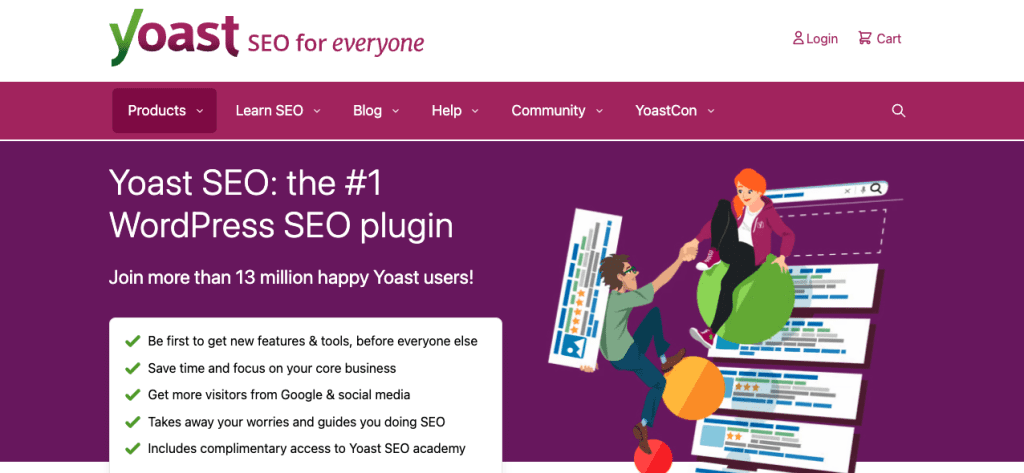
When you want to rank your website organically on search engines, Yoast SEO is the first that I think of. I had tried a few different SEO plugins, but Yoast SEO is still my choice now.
Yoast SEO is good as a guide when you want to start on-page SEO. It provides excellent guides for initial SEO settings, such as adding meta, integrating websites with search engines, generating XML sitemap and much more.
Yoast keeps an eye on every post and page you publish and helps you with excellent tips to optimize them.
Marketing Your Travel Website – How to Create a Travel Website
Building a travel website is just the first step. You need content and a marketing strategy to promote it for a steady traffic flow.
Without traffic, your website is not going to be useful anyway. Here are some strategies that you can implement to market your website.
1. Search engine optimization
Google, the largest search engine, is accountable for most of the search traffic. In fact, Google processes over a hundred thousand searches every second. Making it the best search engine for us to rank for the top keyword.
Pick the few most relevant keywords to your website and stick with them to rank in the search engines.
You can later add more keywords to your articles to target a wider audience.
2. Social Media Marketing
While different platforms will have their own strength for different niches, Instagram and TikTok are definitely the best for the travel niche.
Leverage the photos and videos taken, and post them on Instagram Reels and TikTok to reach a massive amount of audience.
With the proper techniques, you can grab a good number of followers for free.
3. Join travel groups, forums and communities
There are tons of groups out there where people share their travel experiences. If you are a frequent traveller, you can jump in with your valuable travel advice in a thread and show how you can be helpful to someone planning a trip.
Add a link to your website in your signature and link to any relevant content you have published.
Be ready to serve the community and build your reputation as an authority.
4. Email marketing
Email is still the most effective marketing strategy to establish engagement with your audience and drive traffic to your website.
You can ask people to sign up for the newsletter by providing them with some freebies. It can be some flight booking hack, luggage packing tips or some travel tips that are valuable for them.
5. Write guest posts
Guest post is good to reach out to other’s audiences and at the same time create a backlink to your website. This does increase your website exposure and SEO ranking as well.
You can write articles for other blogs and publications in your niche to be known by your potential customers that are their audiences.
Run paid ad campaigns
Paid ad is still one of the fastest ways to grow your popularity if done right. You can use Google, Facebook, and Instagram ads to bring traffic to your website.
Once your ad is live, you can expect traffic to come in. But make sure you know what you are doing to avoid burning your budget in advertising.
How to Make Money From A Travel Website – How to Create a Travel Website
Whether a solo traveller or an agency, you should use every opportunity to improve your earnings.
Below are some of the ways to monetize your travel website:
1. Affiliate marketing
Affiliate marketing is a performance-based marketing strategy where a business rewards one or more affiliates for each visitor or customer brought about by the affiliate’s own marketing efforts.
As a travel website, you can become an affiliate partner of various travel companies such as Expedia, Booking.com, and others. By placing the affiliate links or widgets on your website, any bookings made through those links will earn you a commission.
The commission rate varies depending on the company and the type of booking, but it can be as high as a percentage of the booking value. To get started, you will need to sign up to become an affiliate with the companies you want to work with, and then integrate the links or widgets into your website.
2. Advertising
Advertising is another popular way to monetize a travel website. By selling ad space on your website, you can earn money from businesses looking to reach your audience. This can include banner ads, sponsored posts, or even sponsored reviews.
To monetize your website through advertising, you will need to build up a substantial amount of traffic to your website, and then reach out to potential advertisers to negotiate rates and terms. You can also use Ad networks such as Google Adsense, Media.net, etc to monetize your website through advertising.
3. Sponsored content
Sponsored content is similar to advertising, but instead of selling ad space, you’re paid to create content that promotes a product or service. This can include blog posts, videos, social media posts, and more.
To monetize your website through sponsored content, you will need to have a significant following and be able to demonstrate your ability to create engaging content.
Sponsored content can be a great way to earn money from your travel website, but it’s important to disclose any sponsored content to your audience as per FTC guidelines.
4. E-commerce
If you have your own travel-related products such as e-books, travel gear, or other items, you can sell them directly through your website. This can include physical products or digital products such as e-books or printable travel guides.
If you don’t want to keep your own inventory, you can always try using the dropshipping or print-on-demand method and having the supplier to process and ship out the order.
All you need to do is to include the e-commerce function or create a separate sales page for the product.
5. Brand partnerships
If your website has a significant following, you may be able to land brand partnerships. This can include sponsored trips, product reviews, and more.
To monetize your website through brand partnerships, you will need to have a strong online presence and be able to demonstrate your ability to reach and engage your audience.
6. Subscription-based services
If your website offers a unique service such as customized travel itineraries or personalized travel concierge service, you can charge a subscription fee for access. This can include membership levels with varying levels of access to your services or tiered pricing for different levels of service.
To monetize your website through subscription-based services, you will need to have a clear value proposition for your audience and be able to demonstrate the value of your services. You can also create a course teaching people how to become travel bloggers as this is the dream of many people.
With your success, you can easily get students that are willing to pay to get coached on this topic.
It’s worth noting that building a successful travel website takes time and effort. To maximize your earning potential, it’s important to focus on creating high-quality content that engages and informs your audience and to continually work on driving traffic to your website.
Additionally, it’s important to comply with the laws, regulations, and policies of the travel industry and the countries you are promoting as a travel website.
Final thoughts – How to Create a Travel Website
Building a travel website and turning it into a business or job can be rewarding. Thinking it as a way for you to make money while travelling. This is the dream of many people to be able to quit their job and travel around.
The journey can be hard before you eventually start to get traction and huge followers. But the journey is totally worth it if you can build a successful business out of it.
However, the truth is, nothing will happen if you don’t act now. If you would like to start now, there are two options.
- Start and create your own travel website now by your own, and look for us for help if you face any problem
- Leave your information on the contact us page, and our team will reach out. We will help you to create a fully working website for free. You just need to provide some basic information.

